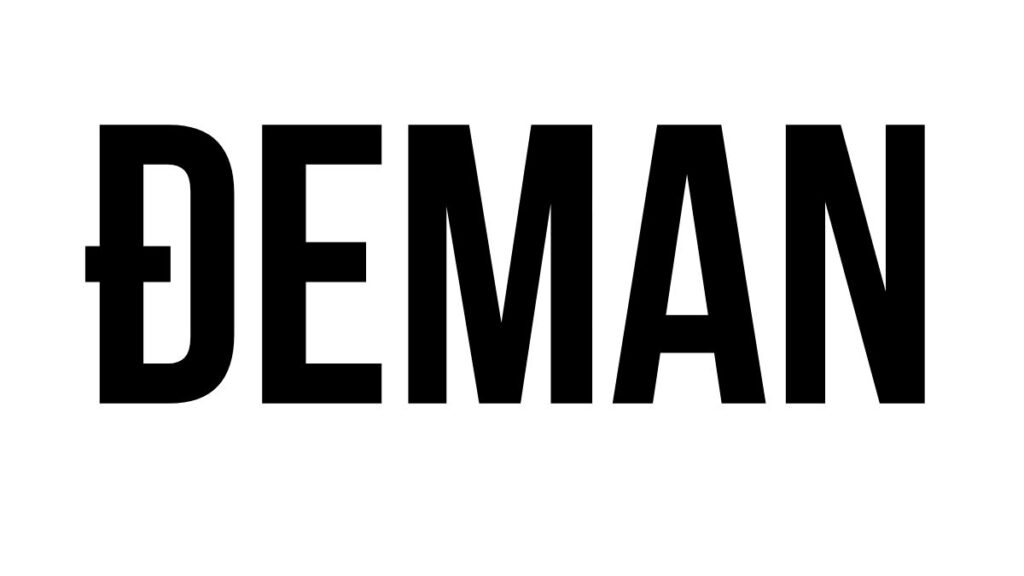In the lexicon of myth and mystery, few words carry the whisper of something more ancient, more primal, than đeman. It isn’t just a name. It’s a concept steeped in fear, folklore, and fascination. Whether whispered in darkened rooms or invoked in tales to thrill, the word đeman conjures an entire cosmos of belief systems and cultural inheritance. But here’s the kicker: the meaning of đeman is far from fixed. It is a fluid, shape-shifting term with roots tangled in Balkan folklore, religious reinterpretation, modern storytelling, and pop-cultural mutation.
So buckle in. SPARKLE is cracking open the vaults of history, folklore, and fear to deconstruct the layers of đeman—from its roots in Slavic mythology to its role in today’s digital imaginations. This is no ordinary demonology. This is a story of cultural evolution, power, and identity.
I. The Origin of Đeman: From Linguistic Roots to Supernatural Realms
At first glance, đeman appears to be a linguistic cousin of the English “demon,” but its etymology isn’t just a cut-and-paste job from Western mythology. Rooted in Balkan languages—particularly Serbian, Bosnian, and Montenegrin—đeman is a term that blends local superstition with imported religious iconography.
The phonetic “đ” is a tell-tale Balkan signature, and the word often refers to malevolent spiritual beings. But unlike Christian devils or Islamic jinn, the đeman isn’t merely a single figure of evil. It’s a symbol of disruption. A figure that tears the veil between the natural and supernatural, often acting as an enforcer of moral consequence.
In some villages of Serbia and Bosnia, old women still murmur stories of the đeman—a creature that haunts crossroads, disturbs the dead, or curses those who break societal norms. The figure has one foot in the mythic and one in the moral.
Đeman is less a creature and more a concept. It embodies the fear of what happens when the natural order is broken.
II. Balkan Folklore and the Đeman’s Role
To understand the đeman, you need to step into the world of pre-modern Balkan folklore. This is a realm where paganism collided with Christianity, where the rural met the divine, and where superstition wasn’t entertainment—it was insurance.
In these stories, đemani (plural) often appear at night, in liminal spaces—doorways, forests, or riverbanks. They’re not merely brutes or monsters. They’re tricksters, tempters, and sometimes, tragic figures themselves. They’re often summoned or awakened by human transgression.
Some folklorists have argued that the đeman was originally a nature spirit—one that became demonic only after centuries of Christian influence. In fact, the figure bears remarkable similarities to the Domovoi of Slavic lore, or even the Djinn of Arabic mythology.
In mountainous regions of Montenegro, local legend speaks of đeman kamen (the demon stone), a haunted place where nothing grows and no animals linger. There, travelers speak of whispers and sudden shadows. Whether these are metaphors or manifestations, they all serve one purpose: enforcing boundaries.
The đeman in this sense is not just evil. It’s equilibrium’s dark twin.
III. Religion and Reinvention: Theological Twists on the Đeman
As Christianity spread through the Balkans, many indigenous spirits and folkloric entities were absorbed or recast within new religious frameworks. The đeman did not escape this transformation.
In many Eastern Orthodox traditions, the đeman was folded into the broader category of demons—servants of Satan, rebels against God. This reinterpretation shifted its identity. No longer just a force of nature or cosmic balance, it became a moral antagonist. A soul-tempter. A whisperer of heresy.
Interestingly, in Bosnian Islamic narratives, there’s a similar figure referred to as a đin—a term closer to “jinn” from Arabic lore. While different from đeman, both figures are often conflated in oral storytelling. The key distinction is that đeman remains culturally Balkan, while đin imports a foreign theology. Yet, both serve similar functions: to test, to frighten, to warn.
In some rural areas, old religious rituals included the exorcism or “banishment” of a đeman—often involving incantations, salt, and fire. These practices, surviving in pockets into the 20th century, demonstrate how deeply embedded the đeman became in both sacred and secular life.
IV. The Modern Đeman: Urban Legends, Horror, and Pop Culture
Fast forward to today, and the đeman has evolved once again. No longer confined to oral stories or rural superstition, it’s found a new home—on screens, in books, and online.
In the post-Yugoslav cultural boom, horror cinema and literature began mining local mythologies for fresh material. Directors and writers took the đeman and turned it into a pop-horror icon. No longer just a symbol of broken taboos, it became the stuff of nightmares—complete with glowing eyes, contorted limbs, and supernatural powers.
Examples include:
-
“Đeman u Noći” – A short film featured at a Balkan horror festival in 2020, depicting a cursed village haunted by an ancestral đeman.
-
“Đemanova Krv” (The Blood of the Đeman) – A bestselling novel that blends war trauma with mythological horror.
-
Multiple indie video games that feature the đeman as a demonic boss-level character.
On social media platforms like TikTok and Instagram, younger generations now recreate traditional stories with a modern twist—posting eerie reels titled “I saw a đeman in my dreams” or “My grandmother told me about a đeman curse that still haunts us.”
The mythic has gone viral. But even as it morphs into meme, the essence of đeman—as an agent of fear and fascination—remains unshaken.
V. Psychological Dimensions: The Đeman Within
Beyond folklore, the đeman offers rich psychological metaphor. In psychoanalytic terms, it functions like Jung’s “Shadow”—the part of the self that is repressed, the fears unspoken, the desires denied.
Dream analysts in the Balkans often refer to nightmare figures as “your đeman.” This isn’t just metaphorical. It speaks to a collective understanding: everyone carries a personal đeman—an internal chaos, trauma, or suppressed memory.
There’s a reason the đeman is often seen at night. It emerges when defenses are down. When the rational is asleep.
This interpretation has even crept into therapeutic language. Some psychologists have incorporated the đeman as a narrative tool—helping patients externalize trauma or internal conflict.
To battle the đeman is to confront the self. It is catharsis through confrontation.
VI. Đeman in Diaspora: Keeping Myth Alive Across Borders
Among Balkan diaspora communities in the United States, Canada, Germany, and Australia, the đeman hasn’t faded. If anything, it’s gained new life.
For immigrants, mythology becomes more than folklore—it’s a tether to identity. The stories of the đeman, passed down through generations, now serve as cultural inheritance. They’re recited at family gatherings, dramatized in community theatre, and even turned into animated YouTube shorts to teach younger generations.
There’s also a protective quality to it. Just as the đeman enforced boundaries in old villages, it now symbolizes the boundary between one’s ancestral identity and the pressures of assimilation.
And yes, there are even Balkan hip-hop tracks that name-check the đeman as a metaphor for social unrest, political corruption, or internal struggle. It’s the 21st century, and the đeman spits bars.
VII. Conclusion: The Đeman’s Ever-Shifting Shape
So what is đeman, really?
A myth? A monster? A metaphor?
It’s all of the above—and that’s the point. The đeman resists single definitions because it lives at the intersections: between good and evil, real and imagined, past and present. It is a mirror held up to society’s shadows. A story we tell when we need to name our fear.
But here’s the twist: maybe the đeman isn’t what haunts us. Maybe it’s what keeps us anchored. A reminder of consequence. A myth that walks beside us through history, trauma, laughter, and bedtime stories.
To fear the đeman is to admit you believe in more than the visible world. To speak of it is to keep alive a rich cultural lineage. And to write about it—well, that’s one more way we keep the darkness just lit enough to explore.
Final Note: The Lingering Legacy of the Đeman
Long after the stories end and the fire dies out, the đeman remains. Not because it lurks in shadows, but because we carry it. In memory. In myth. And most of all, in meaning.
Whether it’s real or imagined, the đeman endures.






